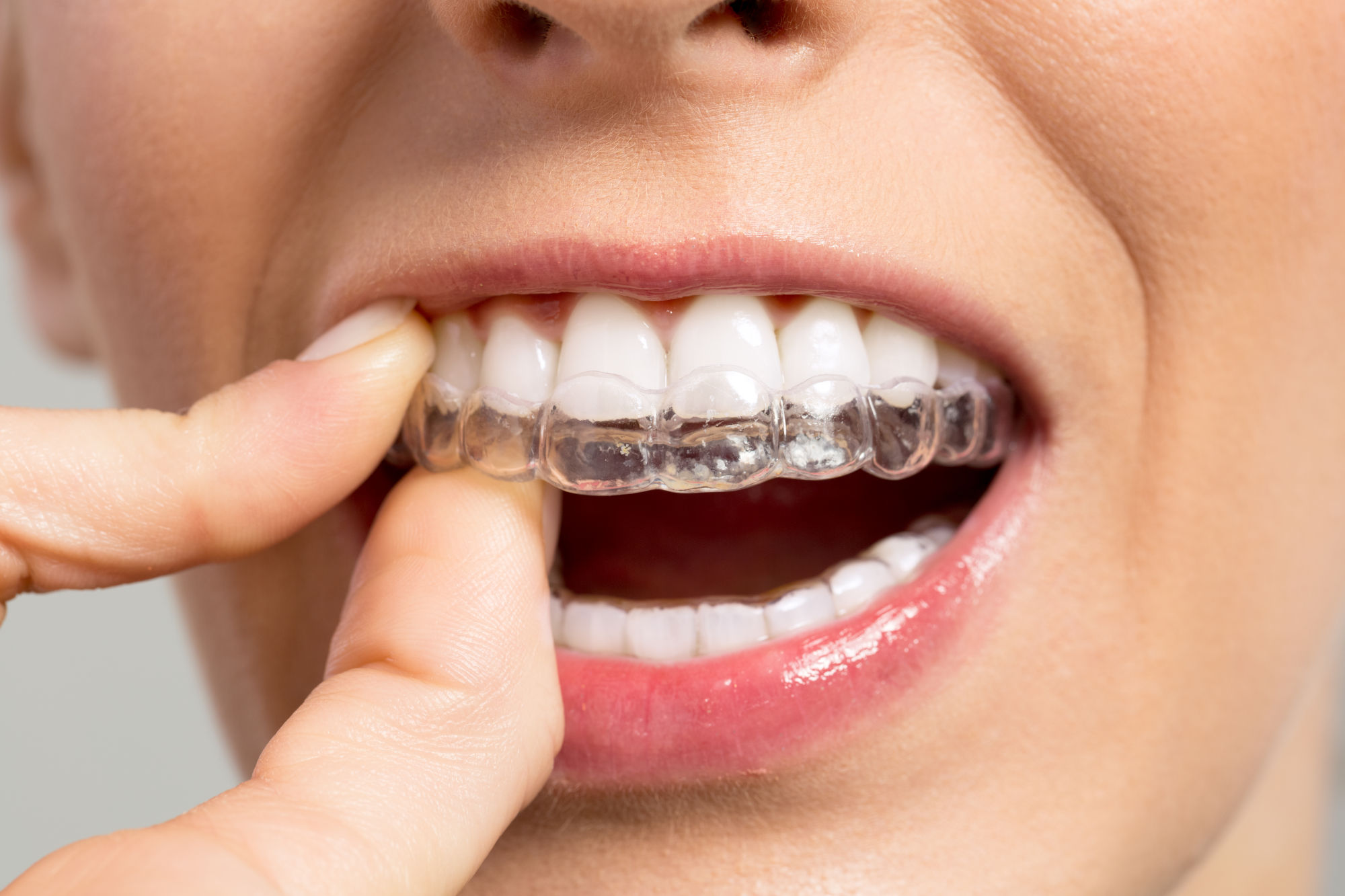Contents

Invisible Braces: Discretion at the Service of Your Smile
Do you dream of a perfectly aligned smile but can't imagine wearing unsightly braces for months? Rest assured, modern orthodontics has more than one trick up its sleeve to offer you a treatment that is as effective as it is discreet.
Discover in this complete guide everything you need to know about the different invisible orthodontic techniques, their advantages, their limitations, and their cost. Say goodbye to the "metal mouth" complex and hello to the magic of invisibly transformed smiles!
How Much Do Invisible Braces Cost?
The price of an invisible orthodontic treatment depends on several factors such as:
- The technique chosen (clear aligners, lingual braces...)
- The complexity of the problem to be treated
- Any additional treatments (extractions, mini-screws...)
- The geographic location of the practice
- The practitioner's fees
As an indication, here is a price range for the main invisible orthodontic options:
| Appliance Type | Price Range |
|---|---|
| Clear Aligners (e.g., Invisalign) | $3,000 to $8,000+ |
| Lingual Braces | $8,000 to $12,000+ |
Only a personalized quote established during a consultation will allow you to know the exact cost of your treatment. Do not hesitate to compare offers from several practitioners and to carefully evaluate the quality-price ratio before committing.
Is Invisible Orthodontics Covered by Insurance?
Unfortunately, orthodontic treatments for adults are not typically covered by basic health insurance plans. However, many dental insurance plans offer partial reimbursement, provided you have subscribed to a specific orthodontic benefit. The terms and amounts vary according to the contracts: inquire with your insurance provider.
For children and adolescents under 19, many plans offer coverage, often paying 50% of the cost up to a lifetime maximum (e.g., $1,500 - $2,500).
What Are the Advantages of Invisible Braces?
Whether you're a teen or an adult, wearing braces can be a real challenge for self-esteem, especially in a society that places great importance on appearance. Invisible orthodontic techniques offer a discreet and comfortable alternative to traditional braces, for an equally impeccable result. No more fear of what others might think, you can smile with confidence during your treatment!
What Are the Different Types of Invisible Orthodontic Appliances?
Today, there are two main families of "invisible" dental appliances:
- Removable Clear Aligners
- Fixed Lingual Braces
How Do Clear Aligners Work?
This revolutionary technique is based on wearing clear plastic trays, which are almost invisible once in the mouth. Custom-made from digital scans of the patient's arches, they are changed approximately every 1-2 weeks to gradually guide the teeth into their new position. Being removable, they easily adapt to daily life: they can be taken out to eat and brush your teeth.
| Advantages of Aligners | Disadvantages of Aligners |
|---|---|
|
|
Clear aligners are suitable for most common orthodontic problems (crowding, gaps...) but may be limited for some complex discrepancies. A consultation with a professional will determine if you are a good candidate.
How Do Lingual Braces Work?
A true technological feat, lingual braces use the same principle of brackets and wires as traditional braces but places them on the inner side of the teeth, facing the tongue. Entirely custom-made, they offer the same performance as visible braces, with a greater complexity of implementation. Placement and adjustments are performed in the office by a trained specialist.
| Advantages of Lingual Braces | Disadvantages of Lingual Braces |
|---|---|
|
|
Invisible Orthodontics: Aligners or Lingual Braces?
It's hard to decide between these two equally discreet and effective options... The choice will ultimately depend on your expectations, your budget, and your individual case. Here are a few criteria to help you reflect.
Clear aligners are recommended if you are looking for:
- Discretion at a lower price point
- An easy-to-live-with appliance for daily life
- A treatment that adapts to your lifestyle
Lingual braces will be more suitable if your priority is:
- Absolute invisibility, even up close
- The correction of complex orthodontic problems
- 100% in-person monitoring with your practitioner
Conclusion
Combining aesthetics and efficiency in an orthodontic treatment is now possible thanks to invisible braces. Whether it's removable clear aligners or fixed lingual braces, these advanced techniques allow for teeth realignment in complete discretion, without compromising on the quality of the results. While their cost may still be a deterrent for some patients, the investment is often worth it to regain a radiant smile and a boost in self-confidence. A great investment for health and well-being, provided you choose the solution best suited to your needs and lifestyle. So, are you ready to take the leap into invisible orthodontics?
FAQ About Invisible Braces
What are the different invisible orthodontic techniques?
There are two main categories: removable clear plastic trays (aligners), and fixed lingual braces placed on the inner side of the teeth. In both cases, the treatment is almost imperceptible once in the mouth.
How much do invisible braces cost?
Prices vary depending on the technique and the complexity of the problem. On average, you can expect to pay between $3,000 and $8,000 for clear aligners, and between $8,000 and $12,000 for lingual braces. Only a personalized quote will accurately estimate the cost of your treatment.
Is invisible orthodontics covered by insurance?
Orthodontic treatments are generally only covered for those under 19. For adults, only some dental insurance plans offer partial reimbursement, subject to specific guarantees.
What are the advantages of clear aligners?
Among the main assets of aligners are their near-invisibility, daily comfort (easy insertion, removal, and maintenance), and safety (low risk of injury).
Are lingual braces truly invisible?
Yes, this is the most discreet option available! Since it is placed on the back of the teeth, facing the tongue, the lingual appliance is completely invisible, even up close.
